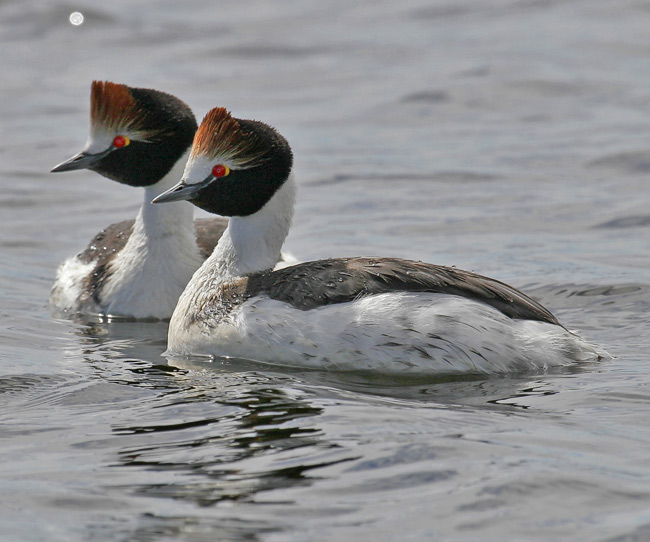
Podiceps gallardoi
TAXONOMY
Podiceps gallardoi, Rumboll, 1974, Argentina.
OTHER COMMON NAMES
English: Mitred grebe; French: Grиbe mitrй; German: Goldscheiteltaucher;
Spanish: Zampullнn Tobiano.
PHYSICAL CHARACTERISTICS
12.6 in (32 cm); 0.9–1.6 lb (420–740 g). Adult breeding: head
and hindneck black with white forehead grading into orangerufous
semi-crest; back blackish, rest of body and most of
wings white. Eyes bright re d, bill bluish gray. Nonbreeding
similar, occasionally with some white feathers on cheeks. Immature
soon loses striped head to become like adult, except for
black instead of rufous on crown, and white lower cheeks and
throat.
DISTRIBUTION
Patagonia, main breeding grounds on meseta between Lake
Stroebel and Lake Cardiel.
HABITAT
Nests in fish-free, steep-sided potholes on volcanic tablelands,
water with abundant submergent and floating carpets of water
milfoil (Myriophyllum elatinoides). After breeding gathers on
large upland lakes, in winter perhaps only on coast.
BEHAVIOR
Gregarious and peaceful. In small dispersed flocks while breeding,
in large flocks at other times.
FEEDING ECOLOGY AND DIET
Feeds entirely on invertebrates, perhaps mainly insects, but
also snails, crustaceans and leeches, mainly caught diving.
REPRODUCTIVE BIOLOGY
Courtship display well developed, more complex and stereotyped
than in any other grebe. Single-brooded. Nest large.
Eggs 1–2, but only one young reared.
CONSERVATION STATUS
Population estimated at 3,000–5,000 birds. Not threatened owing
to inaccessibility of habitat.
SIGNIFICANCE TO HUMANS
None known.
Photo Gallery of - Hooded grebe
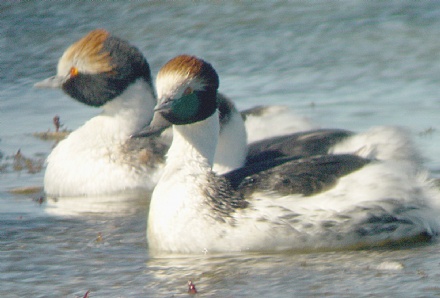
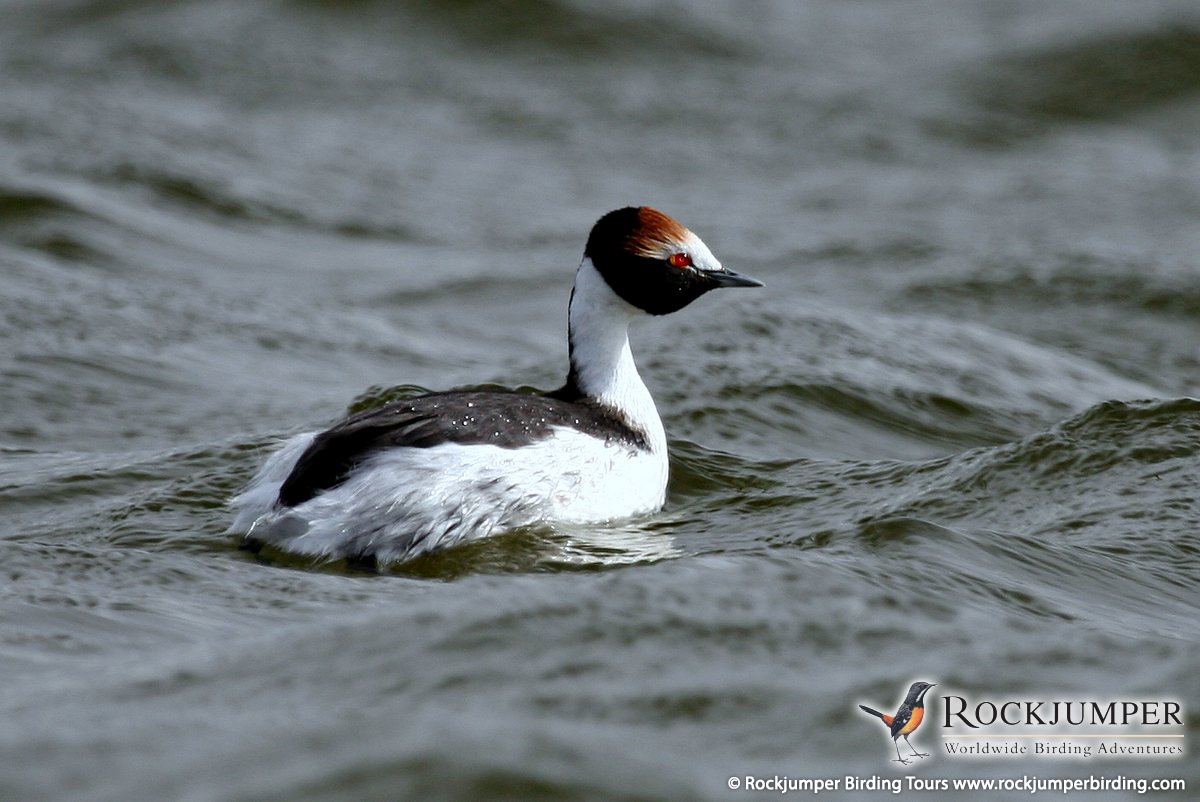
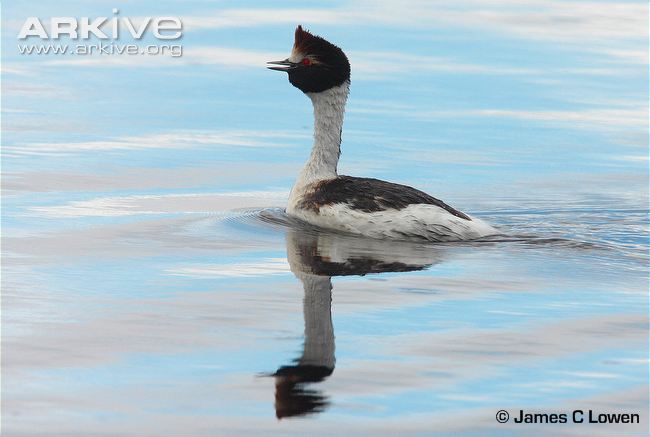
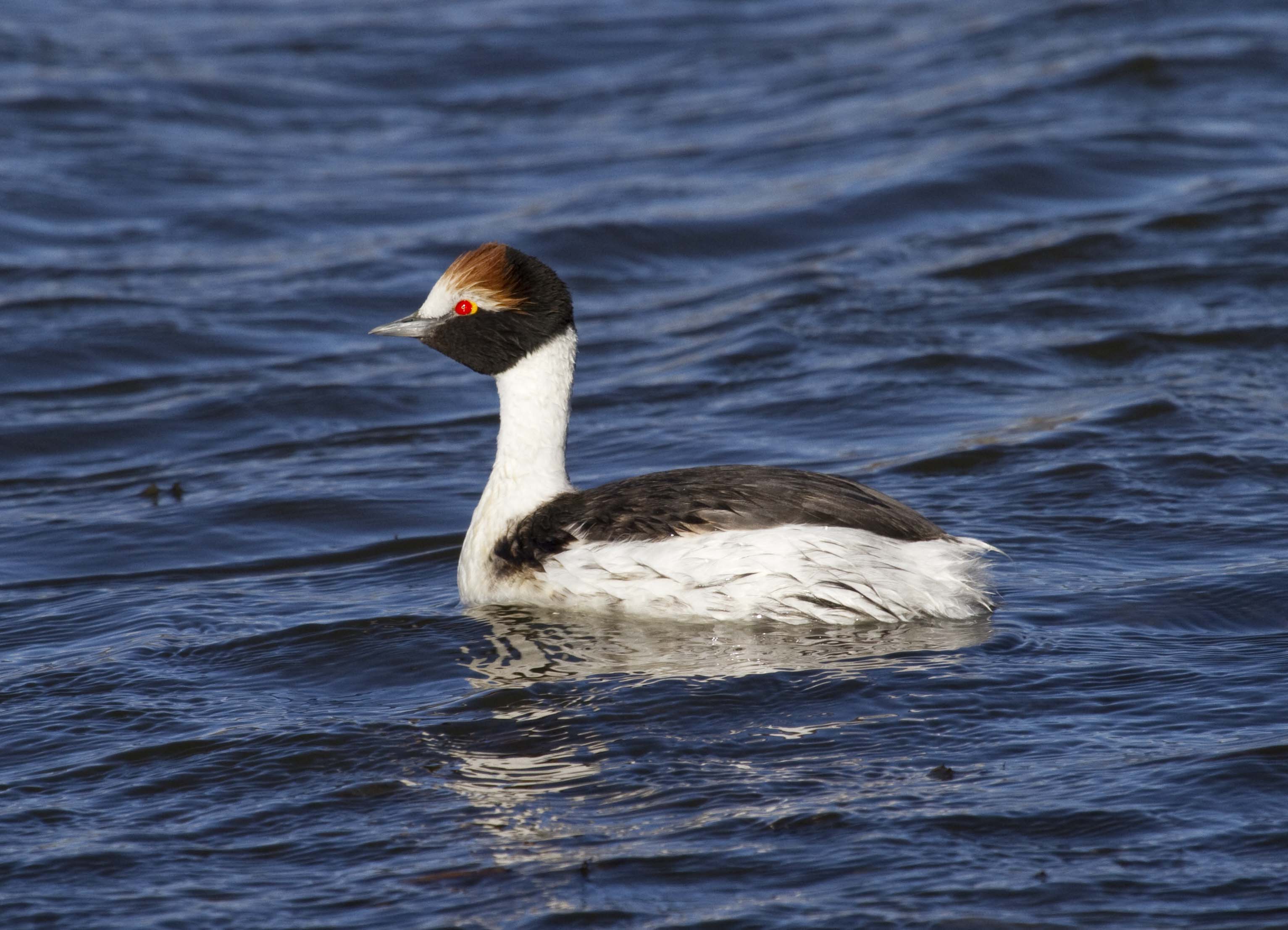
 Animalia Life
Animalia Life